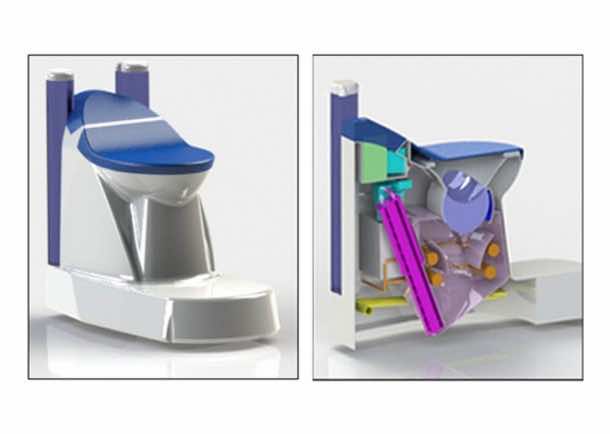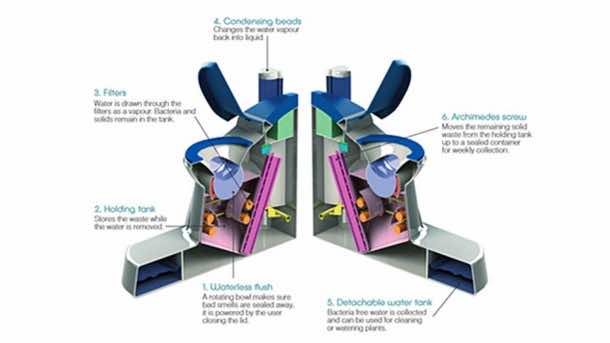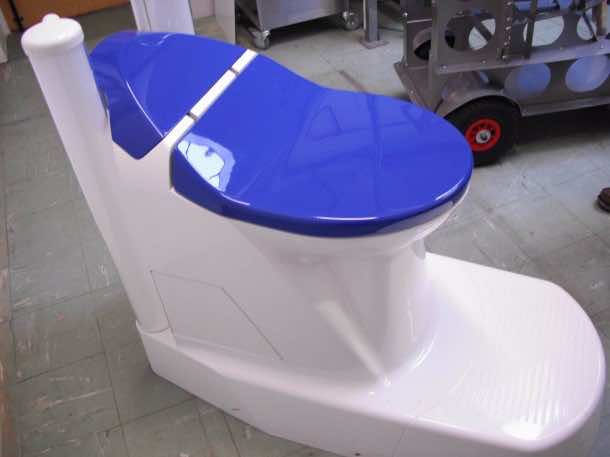Say, would you be interested in an inexpensive, easily maintainable and a green toilet that doesn’t employ the use of water and can change human waste into clean water and electricity? Pretty psyched, yes! This toilet is slated to begin trials in 2016 most probably in Ghana. It has been termed as the ‘Nano Membrane Toilet’ by Cranfield University, its inventor. This approach will help the 2.3 billion persons who do not have access to hygienic and safe toilets.
It works once you close the lid. The bowl’s bottom uses a rotating mechanism that allows the toilet to carry the waste into a sedimentation chamber, which is responsible for blocking any sort of odor. Next step is filtering of the waste via a special nanotech membrane, which divides the vaporized water molecules from the waste and stops pathogens and solids from traveling any further by water.
The vaporized water moves to a chamber that is filled with ‘nano-coated hydrophilic beads’ that allow the water vapor to condense and then collect into an area below. The water achieved this way is pure enough to be used for farm irrigation and household washing. The remaining solid waste and pathogens are then directed by an Archimedean screw into a second chamber and although this part of the toilet is currently being designed, the basic idea that is currently prevailing is to incinerate the solid waste and convert it into energy and ash. The energy will be used for powering the nano-membrane filtration process with surplus energy being used for charging small devices or mobile phones. The only waste product from this process is the ash that will be the result of solid being burned. This ash is nutrient rich and pathogen free thus quite a natural fit for farming. The toilet is capable of managing waste that is being generated by a household of 10 persons.
The project has been partially funded by the Bill & Melinda Gates Foundation’s Reinvent the Toilet Challenge and is the winner of the CleanEquity Monaco 2015 award. It is clean, odorless and quite aspirational while being capable of working in environments that are not sufficient when it comes to external power, water and sewage.
The current plan is for this toilet to be rented to households via local organization thus helping to spread the cost and keeping it under the Gate Foundations’ challenge of 5 cents per person per day. The following video was made by the Cranfield Water Science Institute and was created for the Reinvent the toilet fair that was held in 2014.


